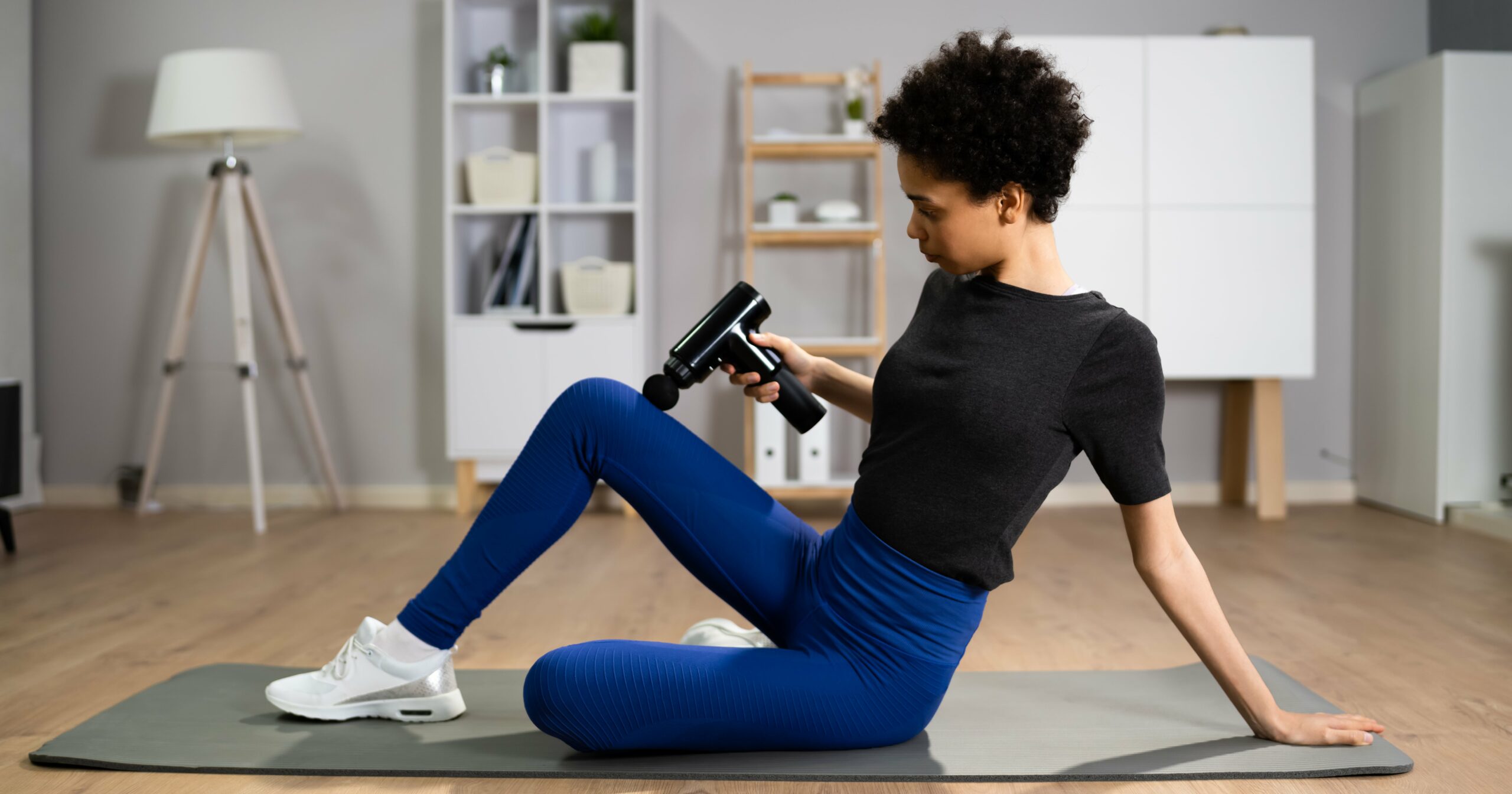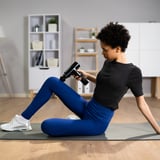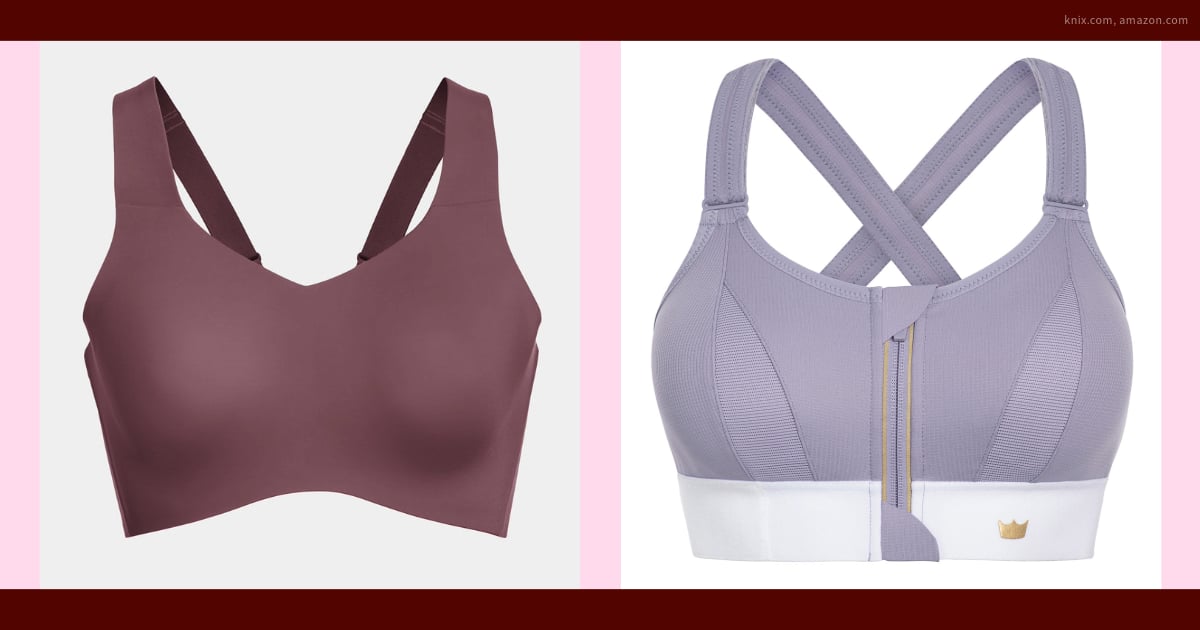“OK guys, I have a PSA for you, and it has to do with massage guns and your neck,” content creator Sophie Dolce begins a video. She tells her TikTok followers that after using a massage gun every 30 minutes to help relieve a kink in her neck, she noticed a big lump. Luckily, Dolce quickly sought medical attention, and doctors confirmed that the lump was most likely caused by a swollen lymph node instead of prolonged massage gun usage. But Dolce’s ultrasound results didn’t stop commenters from worrying about their own massage guns.
“Not me having a mystery stroke at 28 and constantly using a massage gun on my neck,” one user wrote in reaction to Dolce’s original TikTok. “I just got a massage gun so I’m glad I saw this,” another commented, thanking Dolce for sharing. Others expressed concerns about proper massage gun usage, with some people swearing them off altogether.
It’s easy to get carried away with massage guns, says Tony Poland, CMT, a former member of the US Olympic Medical Support Team. “Massage guns feel really good, especially if you can take them up to around 3,000 RPM, which is basically the speed of the myelinated nervous system,” Poland says.
But pause before ditching your massage gun completely. While they do carry risks, “the thing you have to look out for is tissue that is susceptible to damage easily, like arterial tissue,” Poland says. In fact, massage gun manufacturers themselves will recommend avoiding sensitive spots and suggest some people ask their doctors before using one at all (including people with IUDs – more on that below). Ahead, we share all the expert-backed info to help you use your massage gun correctly, prevent injury, and still relieve muscle soreness.
Can You Use a Massage Gun on Your Neck?
Poland says it’s not a great idea to use a massage gun on your neck. “There are arterial sinuses in there that are extremely susceptible to pressure,” he explains. “If you’re pounding away with a massage gun in the side of your neck, there’s a chance you could pass out.”
Julia Morgan, DC, physical therapist, and expert advisor for Hyperice, adds that improper massage gun usage can lead to “unnecessary soreness and bruising.” She would also suggest avoiding the carotid arteries (which travel through your head and neck).
There have also been incidences of people having vertebral artery dissection after using handheld massage devices. In one case, a 27-year-old woman who reported symptoms of headache, neck pain, and dizziness was found to have a vertebral artery dissection; she’d used a handheld massage gun on her neck during the three weeks prior. In another, a 43-year-old woman also had a vertebral artery dissection after using a massage chair that targeted the neck and back.
The bottom line: if your neck is sore, consider other, safer massage techniques. Poland specifically points to a technique called Instrument Assisted Soft Tissue Mobilization (IASTM), similar to the Chinese practice of gua sha. In essence, IASTM uses specialized tools to scrape the surface of the skin, activating the parasympathetic nervous system and releasing knots – no massage gun necessary. But make sure you talk to your doctor before trying, and are familiar with the correct technique.
What Other Body Parts Should You Avoid When Using a Massage Gun?
Generally speaking, Morgan recommends staying away from the face, head, and bony areas like the spine. “Be careful on the front of the neck to avoid the carotid artery and other sensitive structures like the vagus nerve,” Morgan says.
She also says to avoid the base of the skull, as the soft tissue there is extremely sensitive. Poland agrees that the skull should generally be avoided. “I have used a massage gun on temporalis, which is on the side of the skull, but you have to hold it far enough away that the gun is just touching into the tissue, not actually knocking the skull,” he says. “If it’s hitting the skull, that’s no good, because the brain’s not going to tolerate that. It does all sorts of crazy things to your vision and your perception of up.”
Poland also says to avoid the front of the elbow (aka the “eye” of the elbow), the armpit, and the back of the knee. “There is tissue in there, but there’s also very sensitive arterial tissue and nervous tissue,” he says.
Additionally, Theragun, another percussive massage gun, warns against using their product on “your head, neck, and genitalia” in its site FAQs.
Can You Use a Massage Gun While Pregnant?
The Theragun FAQs recommend that pregnant people ask their doctors before using a gun.
Hyperice’s site suggests the same, and also talking to a doctor before using if you have the following conditions: “diabetes with complications such as neuropathy or retinal damage, wear of pacemakers, recent surgery or injury, epilepsy or migraines, herniated disks, spondylolisthesis, spondylolysis, or spondylosis, recent joint replacements or IUD, metal pins or plates.”
This IUD mention gave us pause, but Morgan says to consult your medical provider with any direct concerns and “avoid use around the abdomen and a few days after implantation or retrieval” if you’re still worried. Anate Brauer, MD, a double board-certified ob-gyn, also confirmed that massage guns are not a part of IUD consent counseling (and therefore do not seem to pose a significant threat).
With all that in mind, it may be best to talk to your doctor before using a percussive massage gun, and always avoid using it on your head, neck, and spine (and genitalia). And, of course, if something feels off, contact a healthcare provider STAT.
How to Properly Use a Massage Gun
Start Slow
“You always want to start off slowly when using a massage gun,” Morgan says. Start with the lowest intensity available; you can always adjust it depending on your level of sensitivity – you might be surprised by how little you need to feel the effects. For the best results, Poland recommends a massage gun that can hit about 3,000 RPM and doesn’t travel too much.
Use Gentle Muscle Contraction
Poland notes that there’s also a way to trigger and release myofascial trigger points (often referred to as “knots”) using a massage gun. Once you identify one of these tender spots on either end of the muscle, Poland says to lightly stretch or tense the muscle before going in with the massage gun. “It causes that trigger point to release and let go, and you’re already in a stretch so it discourages the knot from contracting again,” he explains. “The trigger points can release from stretch or from really light contraction – either one – and that’s the way to make a massage gun so much more effective.”
Keep It Light
Another thing to keep in mind is that when using a handheld massage gun, you don’t necessarily have to apply too much additional pressure, Morgan says. Focus on just bringing the gun to your skin, and don’t press or dig it in like you would if you were massaging the area with your hands. “Keep the massage gun moving and avoid spending too much time on a single area,” Morgan says. Most brands recommend around one to two minutes per muscle group.
“People start off way too strong and way too long, and it can give people bad experiences with an amazing tool,” Morgan adds. It might be tempting to linger on sore spots – but move on after a minute, then see how you feel. More often than not, you’ll have already achieved the muscle relaxation you were looking for. This simple tip even helped Poland when his massage gun started to give him bruises. “I tried just using it much more gently,” he said. “Much more effective.”
Use the Correct Attachment
Finally, to help target different points of the body, you may also want to consider a device with different attachments meant for different areas of the body.




